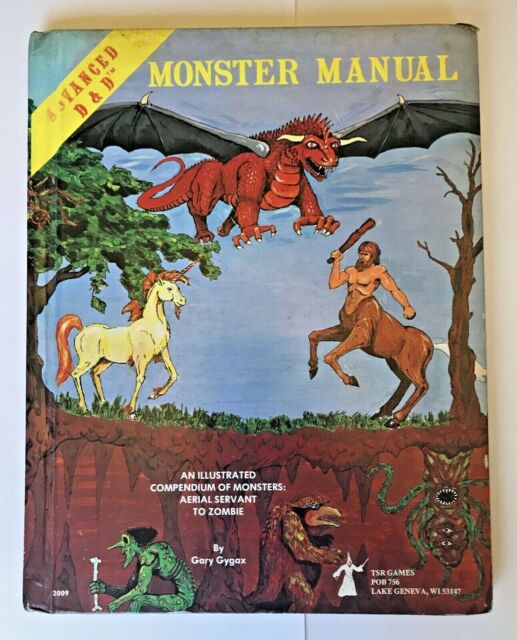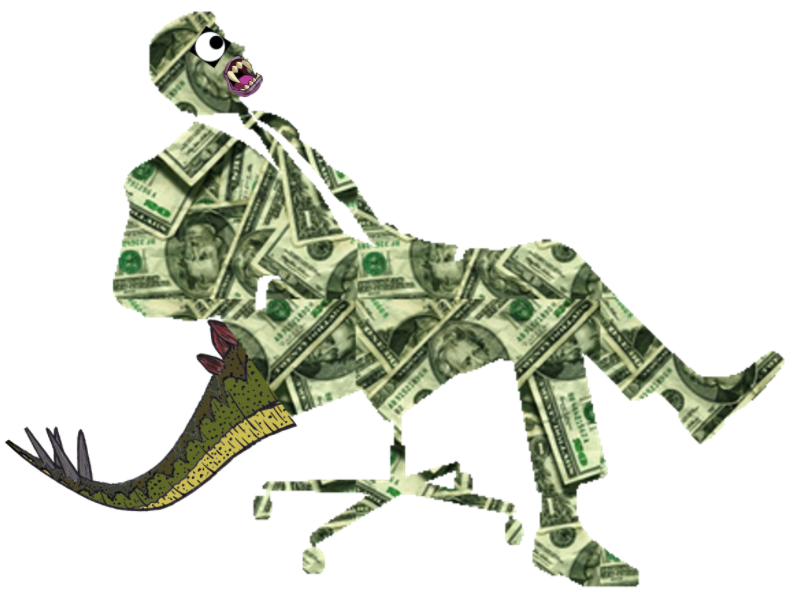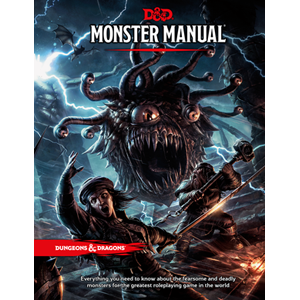How can we make videoconferencing a rewarding experience? How do we create webinars that don’t suck?
Last week I tried a new group exercise which actually turned out well, and I wanted to share it to see what others make of it.
 This took place during the Learning (Hu)man online event, hosted by Arizona State University. The multi-day event included sessions on a range of topics concerning education, technology, and creativity. Paul Signorelli does a good job summarizing some of it.
This took place during the Learning (Hu)man online event, hosted by Arizona State University. The multi-day event included sessions on a range of topics concerning education, technology, and creativity. Paul Signorelli does a good job summarizing some of it.
I hosted three sessions. Two were social, not about content, and were a lot of fun. There were games involved, along with costumes, improv, food, drink, and lots of goofiness. I can post about them later on.
The third one was different. It was for the day whose theme was “Flipping Scary Stories,” the idea being to get people thinking creatively about their fears around education, technology, and creativity. I was brought in for my background with Gothic stuff (lit, this blog, etc.). My initial idea was to bring up scary stories in order to help people think more clearly about their – and then, how to defeat them.
 During a brainstorming session beforehand I floated ideas past the Learning(Hu)Man organizers. One was to ask people to share fears, then gradually turn them into monsters. That way participants could a) have fun, and b) put a mental wrapper around the fears. One organizer told me this reminded her of the Dungeons & Dragons Monster Manual (1977). Aha! This could work as a visualization. It might delight nerds in the audience, too.
During a brainstorming session beforehand I floated ideas past the Learning(Hu)Man organizers. One was to ask people to share fears, then gradually turn them into monsters. That way participants could a) have fun, and b) put a mental wrapper around the fears. One organizer told me this reminded her of the Dungeons & Dragons Monster Manual (1977). Aha! This could work as a visualization. It might delight nerds in the audience, too.
When the day came and the 50-minute session began I explained the plan to everyone: first, folks would surface fears, then turn them into monsters. Next, they would find the monsters’ weaknesses, and then create heroes to defeat them. The end product would be a kind of counter-Monster-Manual.
I presented this in a lighthearted way, peppy and fast, not at all gloomy. I made sure my Zoom appearance was brightly lit. Why? I didn’t want anyone to get scared off or freaked out. The Gothic wasn’t the point.
Time was short, so we began right away. I asked the crowd to quickly share their fears about our shared topic (the nexus of innovation, technology, and education). They had the Zoom chat to write in and also audio to speak out loud. I opened up a Google Doc, shared that screen, and wrote like mad, either scribing from the audio or copying and pasting from chat. Some of the results:
Failing students
“I can’t do it”
Humans are done – we won’t be able to keep up!
A teacher giving “morning work” during the pandemic
Buy the newest, most expensive tech and your students will achieve so much more
Technical issues that prevent students from accessing a given resource.
Admin and staff afraid of the future
Students are coming from high school lacking academic preparation for college.
It was a fascinating mix, including fears for oneself (fatigue came up) and fears for other people. There was a lot more, too; the above is just a sample.
Next, I invoked the Monster Manual to ask them to imagine those fears in the form of monsters. Silence greeted this prompt, so I went on. “Envision one of these fears as an imaginary creature. Give it an appearance. Identify its strengths, attacks… and weaknesses.” Responses started to flow, then participants got into it. They offered names, attributes, and more. It took a little while to generate weaknesses, but they got to these with some further prompting.
The exercise took on a life of its own. Some volunteered people and other entities that assist a given monster, so I ran with this: “Add ‘allies,’ if you can think of some!” That proved popular. At the same time some participants hunted images down and either pasted a URL into Zoom chat or (with my ok) shared their screen to reveal art.
Here’s an example of one monster: Endless student loan debt .
Category: Parasite
Powers: Mind control
Appearance: Not hidden
Attacks: Drains characters; forces players into harsh cost/benefit ratio calculations
Allies: banks, universities (elite), tradition, government, parents
Weaknesses: voting, transparency, open source education, OER, debt forgiveness, corporate partnerships, free tuition, good advising.
One image provided for the Endless Student Debt Monster:

Another fiend was The Silo Monster.
Appearance: big, big, old silo – with many more
Powers: sneaks under bed; generates mind-fuddling acronyms
Attacks: separates people; spreads anxiety; blocks other points of view; feeds on line item budgets; leaves people powerless; grains suck up innovation and creativity; empowers people for the wrong reasons; hides information; endless blame; urges prejudice ; spreads babel
Allies: many alliances in a maze
Weaknesses: friendships, transparency, forced funding partnerships, tech to collaborate, wicked problems, road blocks->shared thought->people listening to each other; multidisciplinary courses
Next up – remember that the clock was ticking, the session being only 50 minutes long – I focused on monsters’ weaknesses and asked people to say more about them. I used folkloric examples for inspiration: garlic against vampires, silver bullets versus werewolves. More weaknesses came from the audience. That shifted the session’s ground towards opposing, rather than delineating monsters. Which was where I wanted people to be, so they could nominate heroes to oppose the bad things.
I feared that might be too cheesy a call, but participants responded rapidly. Ideas came really quickly.
Teachers
Interdisciplinarity
Storytellers – using data
Parents
Staff
Activists
Learners
Dreamers
Automation
Observers
Bloggers/vloggers
Comedians
Government (when it isn’t evil)
Scholarships
Disrupters
Cowboys – “out front and getting shot”
FOSS developers
OER creators
Notice the range of people, both within and beyond academia? And how some weren’t people at all but concepts or social structures: scholarships, interdisciplinarity.
Then folks starting making the game more complex. For example, some identified automation as a monster, while others saw it as a hero. Another person saw heroic possibilities in certain monsters because of the responses they elicited. (Actually, this started early on. I had to finesse things, recognizing the ideas, but promising to get back to them later, which I did. Noting them on the Google Doc may have helped.)
By the end my sense was that participants were energized. They really wanted to go further, adding more heroes and monsters, but we were out of time. I shared the Google Doc’s link, thanked them, and wrapped up.
As an experiment it was a lot of fun. It did several things. First, it combined emotional extremes: horror, goofiness, serious reflection, and inspiration. Second, it was very participatory, consisting mostly of participants’ contributions (but see below). My job was to organize, inspire, and take notes. Third, it was playful, even gamelike, not so much by gamification techniques (points, formal roles, quests) so much as by free play and improvisation. Fourth, it embraced nerdery enthusiastically.
What I would do differently next time:
- I forget to set the Google Doc to allow anyone with the link to edit, so they wouldn’t co-write. That worked out, since I wrote quickly, but I would have preferred that they join in. In fact, this can be broken out into steps, including asking them to bring in outside media (images, videos, audio).
- I didn’t have any visuals beyond a cover image of the latest Manual. Maybe it would help to have a sample entry, giving the less nerdy among the audience a better visualization of how to anatomize a critter.
- Allow more time to explore each point. It worked in under an hour. 90 minutes would let us surface and think through more.
- We didn’t discuss copyright for images. That can be a buzzkill. Maybe it would be useful to point people to specific sites for public domain and CC-licensed content.
- I wonder if I should ratchet back the nerd level. Geek culture can leave some people cold or actively offend others, especially in academia. Perhaps I can gesture towards Dungeons & Dragons more quickly, enough to hail the nerds, but not so much as to alienate others.
- Would audiences beyond role players want more background about D&D and the monster catalogue? I don’t know.
My thanks to the generous audience who participated so enthusiastically. And my thanks to the ASU team who let me get away with it.
(Previous posts on webinars and how to make them not monstrous)







Fun! Running this past my grandsons…. (although the local school board needs it more)
Give your grandsons my best.
I’m sorry to have missed your session! What an fantastic session on Flipping Scary Stories!!! I joined two yesterday. Reuben and Maya both were incredibly too! VR VirBela was interesting and the ASU campus was a delight to roam around and visit many academic and community areas. My brief glimpse of their future in VR was definitely welcoming learning spaces .
And Tom was in my session too!! It was fabulous to see Tom, Rueben and Maya again! It brought back awesome memories of the Future Trends Forums too!
Tom, Rueben and Maya are splendid. I’m glad you could connect with them.
“Geek culture can leave some people cold or actively offend others, especially in academia.”
That’s an interesting qualifier. Do you mean there’s something specially misaligned between geek culture and academia, or that academics are epecially prone to taking offense, or some other thing?
(Nice 1e cover, by the way. Takes me back….)
Good question, Steve. I find academia to have very diverse attitudes towards geek culture. In the humanities I’ve seen open fans and critics of all sorts.
For example, I can’t tell you how many profs have told me they actively dislike science fiction, especially in my field of origin, lit.
Or academics who disdain games and gaming.
I can handle people who don’t like speculative fiction personally, so long as they don’t pretend it’s not literature.
This was an absolutely fantastic and inspiring session. I got a good deal of hope from this session and appreciated very much Dr. Alexander being the DM :). As this event has overlapped with many instructor orientations at my institute, you can bet I shared the idea and look forward to seeing what faculty can come up with for their monsters and heroes in the coming term. Thank you, Dr. Alexander.
Pingback: Learning(Hu)Man Virtual Summer Camp: Adventure Camp | Building Creative Bridges